The Sustainable Development Goals Psychological Inventory: A Network Analysis in Italian University Students
Abstract
:1. Introduction
2. Materials and Methods
2.1. Participants and Procedure
2.2. Measurement
2.3. Data Analysis
2.3.1. Network Analysis on Interest, Motivation, and Self-Efficacy
2.3.2. Network Analysis on Sum of Interest, Motivation, and Self-Efficacy
3. Results
4. Discussion
5. Conclusions
Author Contributions
Funding
Institutional Review Board Statement
Informed Consent Statement
Data Availability Statement
Conflicts of Interest
References
- United Nation. United Nation Resolution Adopted by the General Assembly on 25 September 2015. Transforming Our World: The 2030 Agenda for Sustainable Development. General Assembly. Seventieth Session Agenda Items 15 and 116. 2015. Available online: https://www.un.org/ga/search/view_doc.asp?symbol=A/RES/70/1andLang=E (accessed on 12 July 2022).
- United Nation Stats. Global Indicator Framework for the Sustainable Development Goals,—And Targets of the 2030 Agenda for Sustainable Development. A/RES/71/313E/CN.3/2018/2. 2018. Available online: https://unstats.un.org/sdgs/indicators/Global%20Indicator%20Framework%20after%20refinement_Eng.pdf (accessed on 12 July 2022).
- Carlsen, L.; Bruggemann, R. The 17 United Nations’ sustainable development goals: Status by 2020. Int. J. Sustain. Dev. World Ecol. 2022, 29, 219–229. [Google Scholar] [CrossRef]
- Harris, J.M. Sustainability and sustainable development. Int. Soc. Ecol. Econ. 2003, 1, 1–12. [Google Scholar]
- Scharlemann, J.P.W.; Brock, R.C.; Balfour, N.; Brown, C.; Burgess, N.D.; Guth, M.K.; Ingram, D.J.; Lane, R.; Martin, J.G.C.; Wicander, S.; et al. Towards understanding interactions between Sustainable Development Goals: The role of environment–human linkages. Sustain. Sci. 2020, 15, 1573–1584. [Google Scholar] [CrossRef]
- Breuer, A.; Janetschek, H.; Malerba, D. Translating Sustainable Development Goal (SDG) Interdependencies into policy advice. Sustainability 2019, 11, 2092. [Google Scholar] [CrossRef]
- Dawes, J.H.P.; Zhou, X.; Moinuddin, M. System-level consequences of synergies and trade-offs between SDGs: Quantitative analysis of interlinkage networks at country level. Sust. Sci. 2022, 17, 1435–1457. [Google Scholar] [CrossRef]
- Dincer, I.; Rosen, M.A. Exergy, 2nd ed.; Elsevier: Amsterdam, The Netherlands, 2013. [Google Scholar] [CrossRef]
- Rosen, M.A. Sustainable Development: A Vital Quest. Eur. J. Sustain. Dev. 2017, 1, 2. [Google Scholar] [CrossRef]
- Rosen, M.A. Issues, concepts and applications for sustainability. Glocalism J. Cul. Pol. Inn. 2018, 3, 1–21. [Google Scholar] [CrossRef]
- Alcamo, J.; Thompson, J.; Alexander, A.; Antoniades, A.; Delabre, I.; Dolley, J.; Marshall, F.; Menton, M.; Middleton, J.; Scharlemann, J.P.W. Analysing interactions among the sustainable development goals: Findings and emerging issues from local and global studies. Sustain. Sci. 2020, 15, 1561–1572. [Google Scholar] [CrossRef]
- Di Fabio, A. The psychology of sustainability and sustainable development for well-being in organizations. Front. Psychol. 2017, 8, 1534. [Google Scholar] [CrossRef]
- Di Fabio, A. Positive healthy organizations: Promoting well-being, meaningfulness, and sustainability in organizations. Front. Psychol. 2017, 8, 1938. [Google Scholar] [CrossRef] [Green Version]
- Di Fabio, A.; Rosen, M. Opening the Black Box of Psychological Processes in the Science of Sustainable Development: A New Frontier. Eur. J. Sust. Dev. Res. 2018, 2, 47. [Google Scholar] [CrossRef]
- Renaud, F.G.; Zhou, X.; Bosher, L.; Barrett, B.; Huang, S. Synergies and trade-offs between sustainable development goals and targets: Innovative approaches and new perspectives. Sustain. Sci. 2020, 15, 1011. [Google Scholar] [CrossRef]
- Di Fabio, A. Cross-Cultural Perspectives on Well-Being and Sustainability in Organizations; Springer: Cham, Switzerland, 2022. [Google Scholar] [CrossRef]
- Di Fabio, A.; Saklofske, D.H. The relationship of compassion and self-compassion with personality and emotional intelligence. Pers. Individ. Differ. 2021, 169, 110109. [Google Scholar] [CrossRef]
- Di Fabio, A.; Rosen, M.A. An Exploratory Study of a New Psychological Instrument for Evaluating Sustainability: The Sustainable Development Goals Psychological Inventory. Sustainability 2020, 12, 7617. [Google Scholar] [CrossRef]
- Lent, R.W.; Brown, S.D.; Hackett, G. Toward a unifying social cognitive theory of career and academic interest, choice, and performance. J. Vocat. Behav. 1994, 45, 79–122. [Google Scholar] [CrossRef]
- Ryan, R.M.; Deci, E.L. Self-determination theory and the facilitation of intrinsic motivation, social development, and well-being. Am. Psychol. 2000, 55, 68–78. [Google Scholar] [CrossRef]
- Bandura, A. Social Foundations of Thought and Action: A Social Cognitive Theory; Prentice-Hall, Inc.: Hoboken, NJ, USA, 1986. [Google Scholar]
- VandenBos, G.R. APA Dictionary of Psychology; American Psychological Association: Worcester, MA, USA, 2007. [Google Scholar]
- Anderson, C.C.; Denich, M.; Warchold, A.; Kropp, J.P.; Pradhan, P. A systems model of SDG target influence on the 2030 Agenda for Sustainable Development. Sustain. Sci. 2021, 17, 1459–1472. [Google Scholar] [CrossRef]
- Barquet, K.; Järnberg, L.; Alva, I.L.; Weitz, N. Exploring mechanisms for systemic thinking in decision-making through three country applications of SDG Synergies. Sustain. Sci. 2021, 17, 1557–1572. [Google Scholar] [CrossRef]
- Leavell, H.R.; Clark, E.G. Textbook of Preventive Medicine; McGraw-Hill: New York, NY, USA, 1953. [Google Scholar]
- Di Fabio, A.; Kenny, M.E. Resources for enhancing employee and organizational well-being beyond personality traits: The promise of Emotional Intelligence and Positive Relational Management. Pers. Individ. Differ. 2019, 151, 109278. [Google Scholar] [CrossRef]
- Di Fabio, A.; Peiró, J.M. Human capital sustainability leadership to promote sustainable development and healthy organizations: A new scale. Sustainability 2018, 10, 2413. [Google Scholar] [CrossRef]
- Di Fabio, A.; Kenny, M.E. Connectedness to nature, personality traits and empathy from a sustainability perspective. Curr. Psychol. 2018, 40, 1095–1106. [Google Scholar] [CrossRef]
- Davis, M.H. A multidimensional approach to individual differences in empathy. JSAS Cat. Select. Doc. Psychol. 1980, 10, 85. [Google Scholar]
- Gu, J.; Cavanagh, K.; Baer, R.; Strauss, C. An empirical examination of the factor structure of compassion. PLoS ONE 2017, 12, e0172471. [Google Scholar] [CrossRef]
- Bronk, K.C.; Riches, B.R.; Mangan, S.A. Claremont Purpose Scale: A measure that assesses the three dimensions of purpose among adolescents. Res. Hum. Dev. 2018, 15, 101–117. [Google Scholar]
- Borsboom, D. A network theory of mental disorders. World Psychiatry 2017, 16, 5–13. [Google Scholar] [CrossRef]
- Borsboom, D.; Cramer, A.O. Network analysis: An integrative approach to the structure of psychopathology. Annu. Rev. Clin. Psychol. 2013, 9, 91–121. [Google Scholar] [CrossRef]
- Beck, E.D.; Jackson, J.J. Network Approaches to Representing and Understanding Personality Dynamics, Measuring and Modeling Persons and Situations; Wood, D., Read, S.J., Harms, P.D., Slaughter, A., Eds.; Academic Press: Cambridge, MA, USA, 2021; pp. 465–497. [Google Scholar]
- Costantini, G.; Richetin, J.; Borsboom, D.; Fried, E.I.; Rhemtulla, M.; Perugini, M. Development of indirect measures of conscientiousness: Combining a facets approach and network analysis. Eur. J. Pers. 2015, 29, 548–567. [Google Scholar] [CrossRef]
- Lange, J.; Dalege, J.; Borsboom, D.; van Kleef, G.A.; Fischer, A.H. Toward an integrative psychometric model of emotions. Perspect. Psychol. Sci. 2020, 15, 444–468. [Google Scholar] [CrossRef]
- Briganti, G.; Kempenaers, C.; Brauna, S.; Fried, E.I.; Linkowski, P. Network analysis of empathy items from the interpersonal reactivity index in 1973 young adults. Psychiatry Res. 2018, 265, 87–92. [Google Scholar] [CrossRef]
- Di Fabio, A.; Saklofske, D.H.; Gori, A.; Svicher, A. Perfectionism: A network analysis of relationships between the Big Three dimensions and the Big Five Personality traits. Pers. Individ. Differ. 2022, 199, 111839. [Google Scholar] [CrossRef]
- Trahair, C.; Baran, L.; Flakus, M.; Kowalski, C.M.; Rogoza, R. The structure of the Dark Triad traits: A network analysis. Pers. Individ. Differ. 2020, 167, 110265. [Google Scholar] [CrossRef]
- Contreras, A.; Nieto, I.; Valiente, C.; Espinosa, R.; Vazquez, C. The Study of psychopathology from the network analysis perspective: A systematic review. Psychother. Psychosom. 2019, 88, 71–83. [Google Scholar] [CrossRef] [PubMed]
- Govorova, E.; Benítez, I.; Muñiz, J. Predicting student well-being: Network analysis based on PISA 2018. Int. J. Environ. Health Res. 2020, 17, 4014. [Google Scholar] [CrossRef] [PubMed]
- Svicher, A.; Gori, A.; Di Fabio, A. Work as Meaning Inventory: A network analysis in Italian workers and students. Aust. J. Career Dev. 2022, 31, 130–148. [Google Scholar] [CrossRef]
- Svicher, A.; Di Fabio, A.; Gori, A. Decent work in Italy: A network analysis. Aust. J. Career Dev. 2022, 31, 42–56. [Google Scholar] [CrossRef]
- Schmittmann, V.D.; Cramer, A.O.J.; Waldorp, L.J.; Epskamp, S.; Kievit, R.A.; Borsboom, D. Deconstructing the construct: A network perspective on psychological phenomena. New Ideas Psychol. 2013, 31, 43–53. [Google Scholar] [CrossRef]
- Epskamp, S.; Borsboom, D.; Fried, E.I. Estimating psychological networks and their accuracy: A tutorial paper. Behav. Res. Methods 2018, 50, 195–212. [Google Scholar] [CrossRef] [PubMed]
- Epskamp, S.; Fried, E.I. A tutorial on regularized partial correlation networks. Psychol. Methods 2018, 23, 617–634. [Google Scholar] [CrossRef]
- Wade, R.; Parker, J. EFA-ESD Dialogue: Educating for a Sustainable World. UNESCO 2008. Available online: https://unesdoc.unesco.org/ark:/48223/pf0000178044178044e.pdf (accessed on 23 August 2022).
- Avelar, A.B.A.; Silva-Oliveira, K.D.; Pereira, R.S. Education for advancing the implementation of the Sustainable Development Goals: A systematic approach. Int. J. Manag. 2019, 17, 100322. [Google Scholar] [CrossRef]
- Yamane, T.; Kaneko, S. Is the younger generation a driving force toward achieving the sustainable development goals? Survey experiments. J. Clean. Prod. 2021, 292, 125932. [Google Scholar] [CrossRef]
- Burger, J.; Isvoranu, A.-M.; Lunansky, G.; Haslbeck, J.M.B.; Epskamp, S.; Hoekstra, R.H.A.; Fried, E.I.; Borsboom, D.; Blanken, T.F. Reporting standards for psychological network analyses in cross-sectional data. Psychol. Methods 2022, 35404629. [Google Scholar] [CrossRef] [PubMed]
- Epskamp, S. “bootnet”. Bootstrap Methods for Various Network Estimation Routines. (R Package Version 1.5) [Computer Software]. 2021. Available online: https://cran.r-project.org/web/packages/bootnet/bootnet.pdf (accessed on 12 July 2022).
- Haslbeck, J. “mgm”. Estimating Time-Varying k-Order Mixed Graphical Models. (R Package Version 1.2-12) [Computer Software]. 2021. Available online: https://cran.r-project.org/web/packages/mgm/mgm.pdf (accessed on 12 July 2022).
- Epskamp, S. “qgraph”. Graph Plotting Methods, Psychometric Data Visualization and Graphical Model Estimation. (R Package Version 1.9) [Computer Software]. 2021. Available online: https://cran.r-project.org/web/packages/qgraph/qgraph.pdf (accessed on 12 July 2022).
- Van der Ark, L.A.; Koopman, L.; Straat, J.H.; van den Bergh, D. Package Mokken Version 3.0.6; [Computer software]; Tilburg University: Tilburg, The Netherlands, 2021. [Google Scholar]
- Sijtsma, K.; Verweij, A.C. Mokken Scale Analysis: Theoretical considerations and an application to transitivity tasks. Appl. Meas. Educ. 1992, 5, 355–373. [Google Scholar] [CrossRef]
- Valente, T.W. Network interventions. Science 2012, 337, 49–53. [Google Scholar] [CrossRef] [PubMed]
- Haslbeck, J.M.B.; Waldorp, L.J. How well do network models predict observations? On the importance of predictability in network models. Behav. Res. Methods 2018, 50, 853–861. [Google Scholar] [CrossRef]
- Hsieh, C.-J.; Pan, K.; Lee, H.-C.; Shih, Y.-L. Gender equality in employment among health care undergraduate students: A cross-sectional survey. Healthcare 2022, 10, 543. [Google Scholar] [CrossRef]
- Kitta, I.; Cardona-Moltó, M.-C. Students’ perceptions of gender mainstreaming implementation in university teaching in Greece. J. Gend. Stud. 2022, 31, 457–477. [Google Scholar] [CrossRef]
- ISTAT Povertà in Italia. Italian Institute of Statistics (ISTAT). Poverty in Italy. 2021. Available online: https://www.istat.it/it/files/2022/06/Report_Povert%C3%A0_2021_14-06.pdf (accessed on 12 July 2022).
- Di Fabio, A.; Svicher, A. The Psychology of Sustainability and Sustainable Development: Advancing decent work, inclusivity, and positive strength-based primary preventive interventions for vulnerable workers. Front. Psychol. 2021, 12, 718354. [Google Scholar] [CrossRef]
- Svicher, A.; Di Fabio, A. Job crafting: A challenge to promote decent work for vulnerable workers. Front. Psychol. 2021, 12, 681022. [Google Scholar] [CrossRef]
- Blustein, D.L.; Kenny, M.E.; Di Fabio, A.; Guichard, J. Expanding the impact of the psychology of working: Engaging psychology in the struggle for decent work and human rights. J. Career Assess. 2019, 27, 3–28. [Google Scholar] [CrossRef]
- Di Fabio, A.; Gori, A. Developing a new instrument for assessing Acceptance Change. Front. Psychol. 2016, 7, 802. [Google Scholar] [CrossRef]
- Whiston, S.C. Accountability through action research: Research methods for practitioners. J. Couns. Dev. 1996, 74, 616–623. [Google Scholar] [CrossRef]
- Whiston, S.C. Selecting career outcome assessments: An organizational scheme. J. Career Asses. 2001, 9, 215–228. [Google Scholar] [CrossRef]
- Whiston, S.C. Vocational counseling and interventions: An exploration of future ”big“ questions. J. Career Asses. 2011, 19, 287–295. [Google Scholar] [CrossRef]
- Sexton, T.L.; Schofield, T.L.; Whiston, S.C. Evidence-based practice: A pragmatic model to unify counseling. Couns. Hum. Develop. 1997, 30, 17–33. [Google Scholar]
- Di Fabio, A.; Gori, A. Assessing Workplace Relational Civility (WRC) with a new multidimensional “mirror” measure. Front. Psychol. 2016, 7, 890. [Google Scholar] [CrossRef] [Green Version]

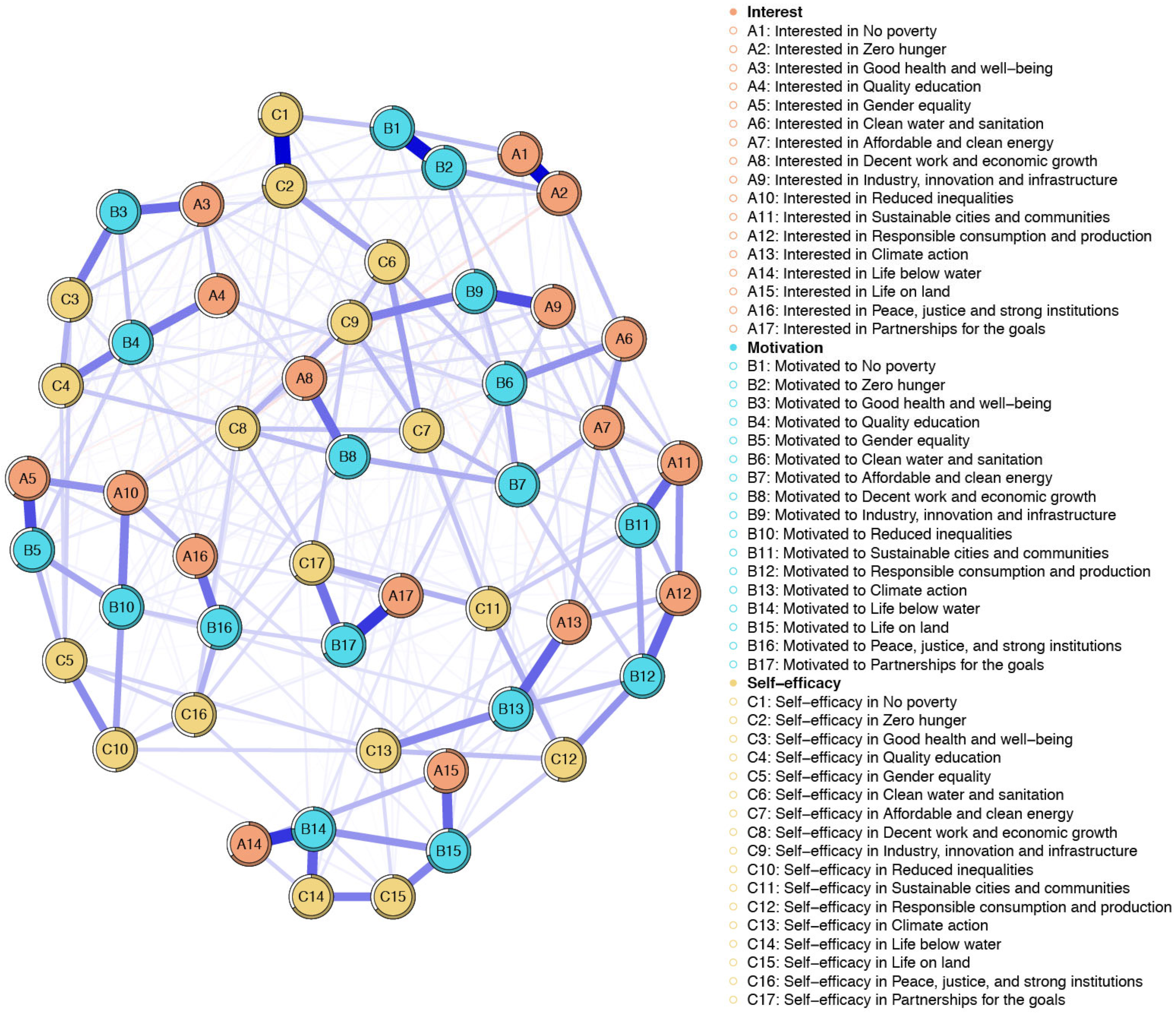
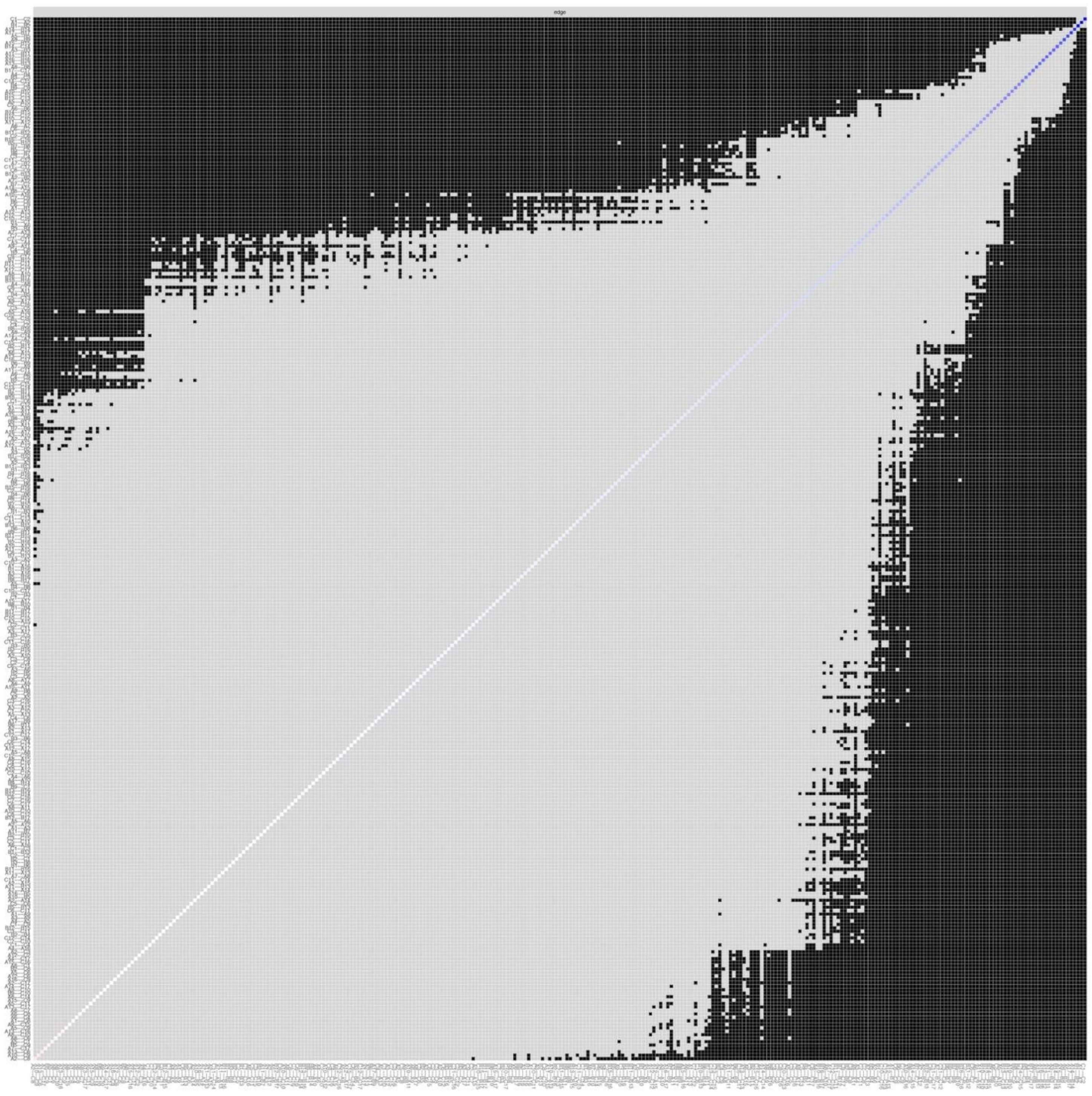

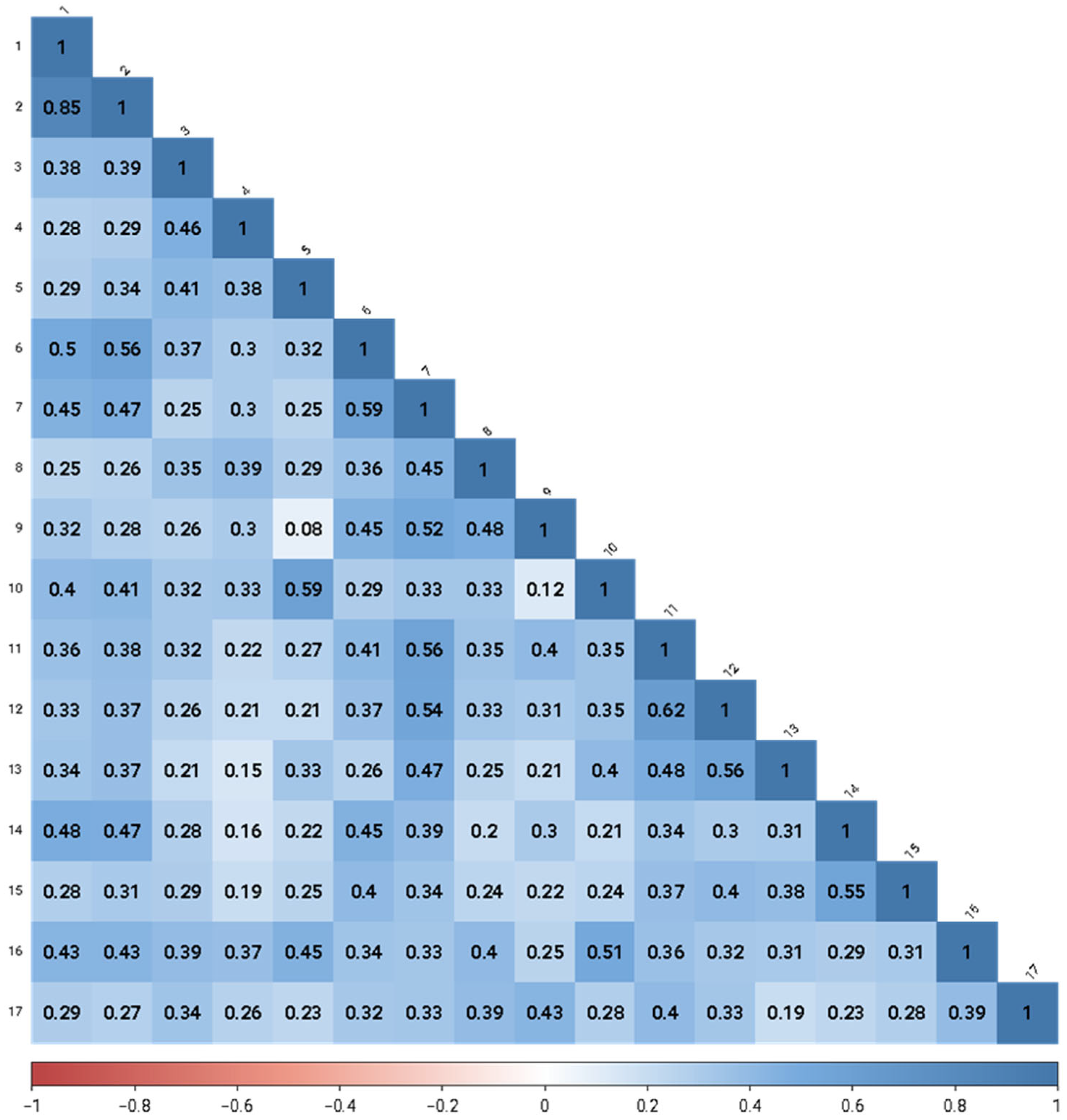
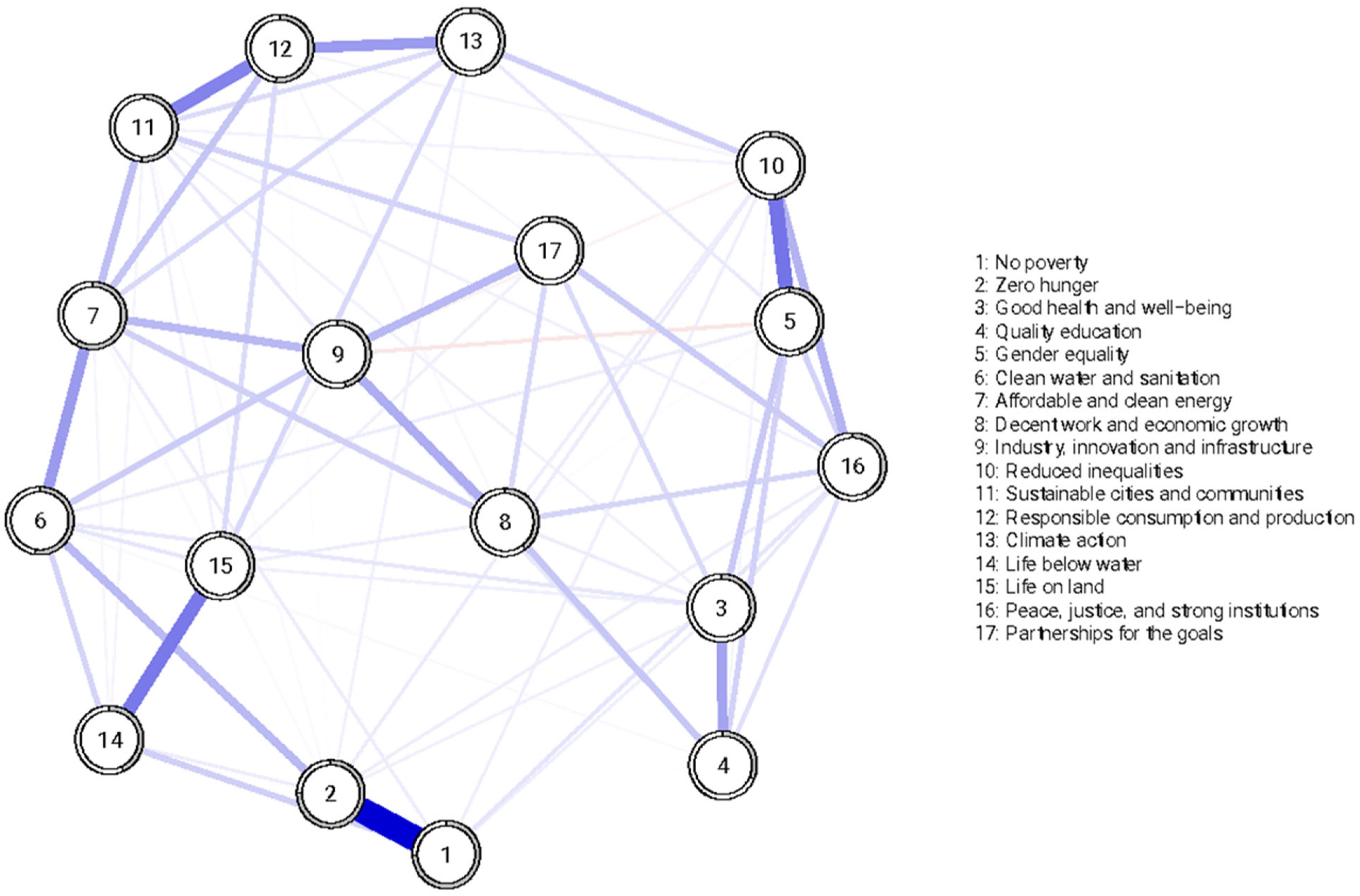
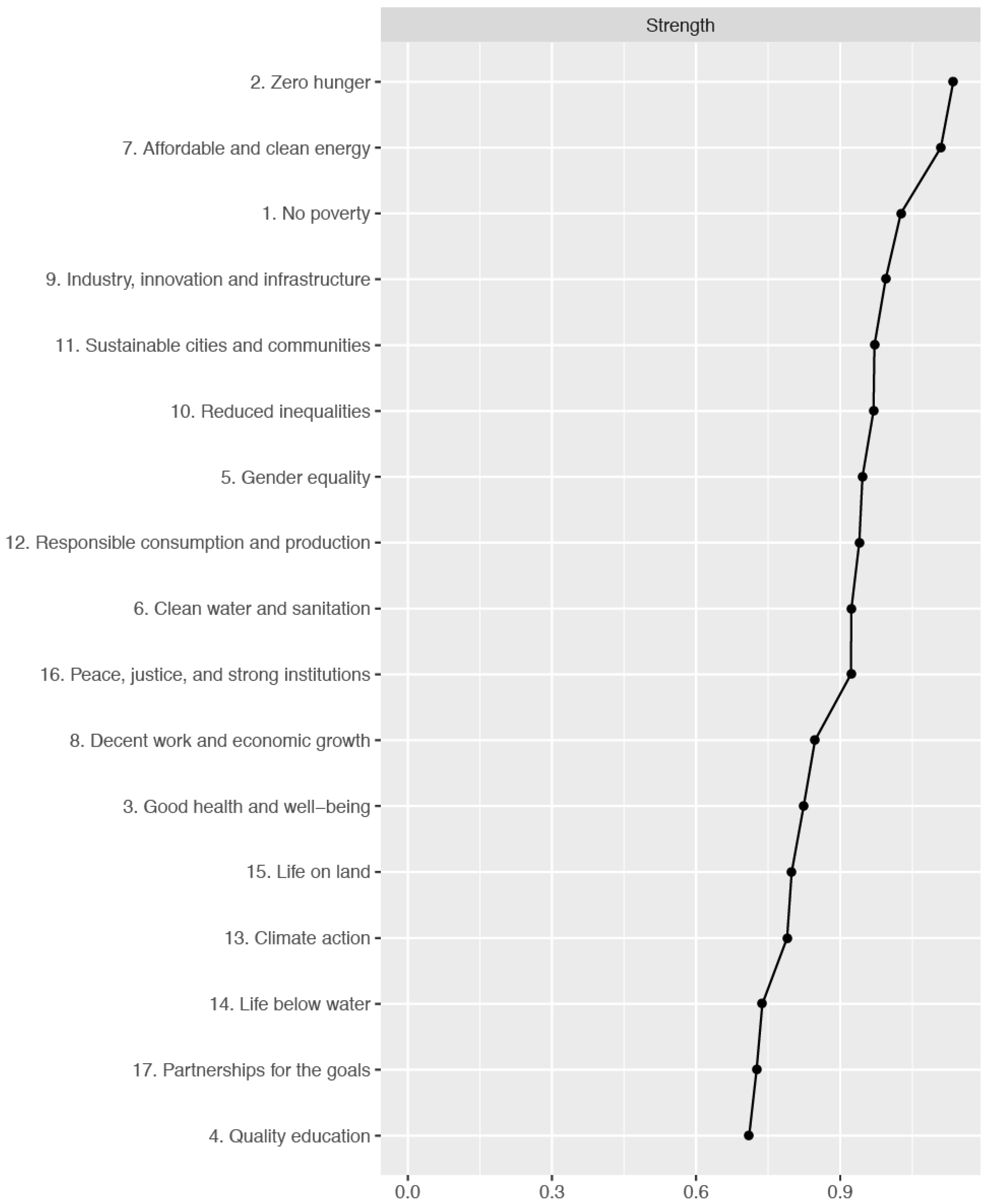
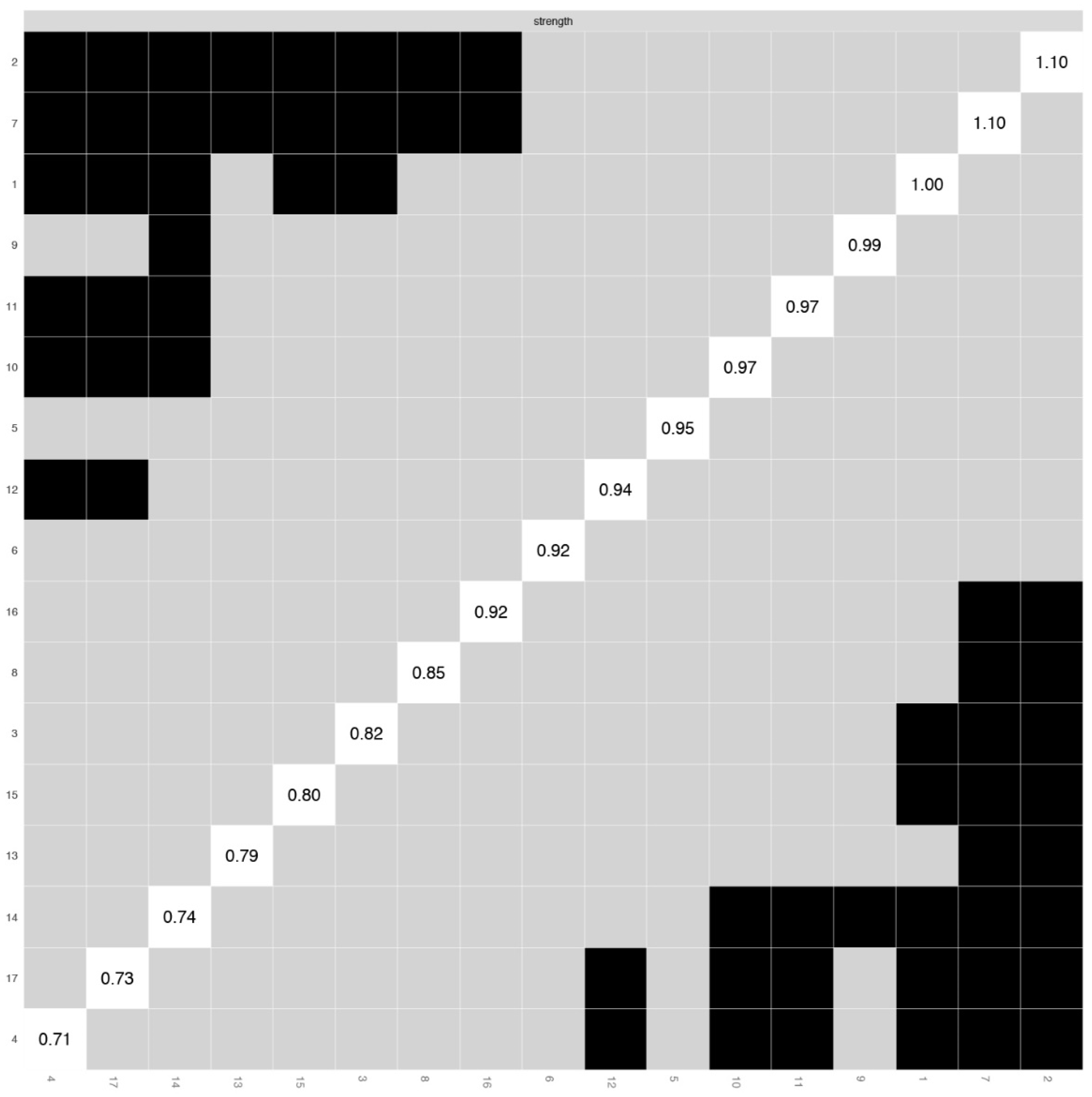
| Sustainable Development Goals | 1st Occurrence | 2nd Occurrence | 3rd Occurrence | 4th Occurrence | 5th Occurrence |
|---|---|---|---|---|---|
| 1. No poverty | ✓ | ||||
| 2. Zero hunger | ✓ | ||||
| 3. Good health and well-being | ✓ | ||||
| 4. Quality education | ✓ | ||||
| 5. Gender equality | ✓ | ||||
| 6. Clean water and sanitation | ✓ | ||||
| 7. Affordable and clean energy | ✓ | ||||
| 8. Decent work and economic growth | ✓ | ||||
| 9. Industry, innovation and infrastructure | ✓ | ||||
| 10. Reduced inequalities | ✓ | ||||
| 11. Sustainable cities and communities | ✓ | ||||
| 12. Responsible consumption and production | ✓ | ||||
| 13. Climate action | ✓ | ||||
| 14. Life below water | ✓ | ||||
| 15. Life on land | ✓ | ||||
| 16. Peace, justice, and strong institutions | ✓ | ||||
| 17. Partnerships for the goals | ✓ |
| Sustainable Development Goals | Mean | Sd | Min | Max | Skewness | Kurtosis | Hij(SE) | Score Evaluation |
|---|---|---|---|---|---|---|---|---|
| 1. No poverty | 9.90 | 2.37 | 3 | 15 | −0.07 | −0.30 | 0.55 (0.03) | Low |
| 2. Zero hunger | 10.10 | 2.37 | 3 | 15 | −0.18 | −0.14 | 0.52 (0.03) | Medium |
| 3. Good health and well-being | 12.00 | 2.11 | 4 | 15 | −0.78 | 0.61 | 0.55 (0.04) | High |
| 4. Quality education | 11.63 | 2.15 | 4 | 15 | −0.52 | 0.19 | 0.50 (0.04) | High |
| 5. Gender equality | 12.65 | 2.18 | 3 | 15 | −1.19 | 1.62 | 0.58 (0.04) | High |
| 6. Clean water and sanitation | 10.35 | 2.40 | 3 | 15 | −0.16 | −0.29 | 0.46 (0.03) | Medium |
| 7. Affordable and clean energy | 10.51 | 2.31 | 3 | 15 | −0.21 | −0.11 | 0.47 (0.04) | Medium |
| 8. Decent work and economic growth | 11.05 | 2.16 | 4 | 15 | −0.32 | −0.22 | 0.44 (0.04) | Medium |
| 9. Industry, innovation and infrastructure | 8.72 | 2.70 | 3 | 15 | 0.07 | −0.48 | 0.62 (0.03) | Low |
| 10. Reduced inequalities | 12.27 | 2.25 | 4 | 15 | −0.79 | 0.21 | 0.54 (0.04) | High |
| 11. Sustainable cities and communities | 10.44 | 2.51 | 3 | 15 | −0.37 | −0.10 | 0.57 (0.03) | Medium |
| 12. Responsible consumption and production | 10.86 | 2.62 | 3 | 15 | −0.41 | −0.16 | 0.63 (0.03) | Medium |
| 13. Climate action | 11.48 | 2.55 | 3 | 15 | −0.68 | 0.26 | 0.60 (0.03) | High |
| 14. Life below water | 8.67 | 2.73 | 3 | 15 | −0.01 | −0.74 | 0.70 (0.03) | Low |
| 15. Life on land | 10.56 | 2.57 | 3 | 15 | −0.41 | −0.03 | 0.60 (0.03) | Medium |
| 16. Peace, justice, and strong institutions | 11.47 | 2.35 | 3 | 15 | −0.56 | 0.21 | 0.51 (0.04) | Medium |
| 17. Partnerships for the goals | 9.13 | 2.93 | 3 | 15 | −0.02 | −0.54 | 0.67 (0.03) | Low |
| Sustainable Development Goals (SDGs) | Occurrence | Score Evaluation | Interpretation |
|---|---|---|---|
| 4. Quality education | 1st | High | Reciprocal reinforcement processes + high self-perception of SDG |
| 13. Climate action | 1st | High | Reciprocal reinforcement processes + high self-perception of SDG |
| 15. Life on land | 1st | Medium | Reciprocal reinforcement processes + medium self-perception of SDG |
| 14. Life below water | 1st | Low | Reciprocal reinforcement processes + low self-perception of SDG |
| 9. Industry, innovation and infrastructure | 1st | Low | Reciprocal reinforcement processes + low self-perception of SDG |
| 3. Good health and well-being | 2nd | High | Zone of proximal development for self-efficacy + high self-perception of SDG |
| 5. Gender Equality | 2nd | High | Zone of proximal development for self-efficacy + high self-perception of SDG |
| 2. Zero hunger | 2nd | Medium | Zone of proximal development for self-efficacy + medium self-perception of SDG |
| 16. Peace, justice, and strong institutions | 2nd | Medium | Zone of proximal development for self-efficacy + medium self-perception of SDG |
| 11. Sustainable cities and communities | 2nd | Medium | Zone of proximal development for self-efficacy + medium self-perception of SDG |
| 12. Responsible consumption and production | 2nd | Medium | Zone of proximal development for self-efficacy + medium self-perception of SDG |
| 1. No poverty | 2nd | Low | Zone of proximal development for self-efficacy + low self-perception of SDG |
| 10. Reduced inequalities | 5th | High | No reciprocal reinforcement processes + high self-perception of SDG |
| 6. Clean water and sanitation | 5th | Medium | No reciprocal reinforcement processes + medium self-perception of SDG |
| 7. Affordable and clean energy | 5th | Medium | No reciprocal reinforcement processes + medium self-perception of SDG |
| 8. Decent work and economic growth | 5th | Medium | No reciprocal reinforcement processes + medium self-perception of SDG |
| 17. Partnerships for the goals | 5th | Low | No reciprocal reinforcement processes + low self-perception of SDG |
Publisher’s Note: MDPI stays neutral with regard to jurisdictional claims in published maps and institutional affiliations. |
© 2022 by the authors. Licensee MDPI, Basel, Switzerland. This article is an open access article distributed under the terms and conditions of the Creative Commons Attribution (CC BY) license (https://creativecommons.org/licenses/by/4.0/).
Share and Cite
Svicher, A.; Gori, A.; Di Fabio, A. The Sustainable Development Goals Psychological Inventory: A Network Analysis in Italian University Students. Int. J. Environ. Res. Public Health 2022, 19, 10675. https://doi.org/10.3390/ijerph191710675
Svicher A, Gori A, Di Fabio A. The Sustainable Development Goals Psychological Inventory: A Network Analysis in Italian University Students. International Journal of Environmental Research and Public Health. 2022; 19(17):10675. https://doi.org/10.3390/ijerph191710675
Chicago/Turabian StyleSvicher, Andrea, Alessio Gori, and Annamaria Di Fabio. 2022. "The Sustainable Development Goals Psychological Inventory: A Network Analysis in Italian University Students" International Journal of Environmental Research and Public Health 19, no. 17: 10675. https://doi.org/10.3390/ijerph191710675
APA StyleSvicher, A., Gori, A., & Di Fabio, A. (2022). The Sustainable Development Goals Psychological Inventory: A Network Analysis in Italian University Students. International Journal of Environmental Research and Public Health, 19(17), 10675. https://doi.org/10.3390/ijerph191710675









